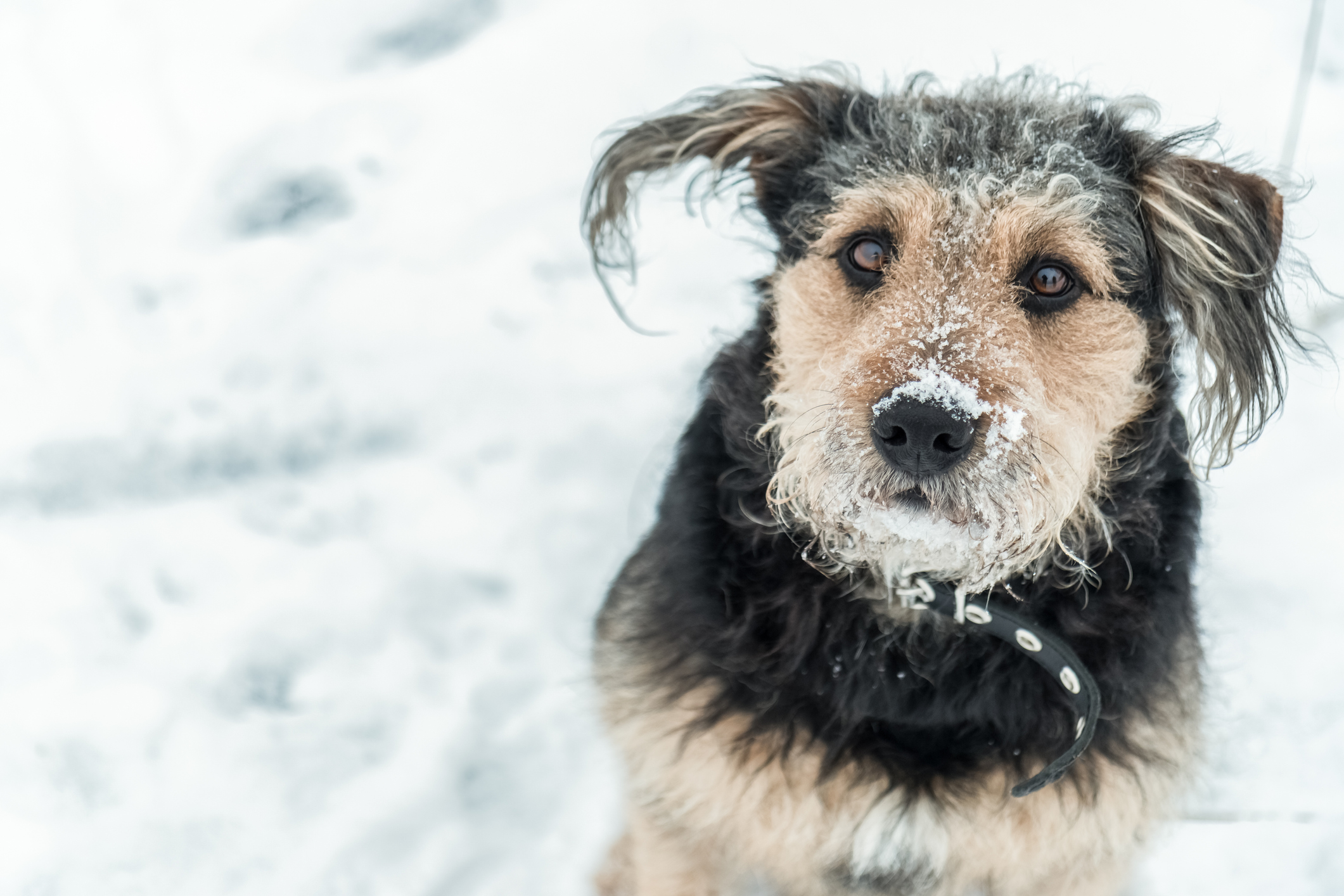
The Deadly Reality of Leaving Dogs Outside in the Winter
Hypothermia in dogs is no joke. Just like with humans, the condition can rapidly become fatal if not treated immediately. If hypothermia sets in, there is a series of simple steps you should take to save your four-legged companion. This winter, take extra care to protect you and your dog against the elements!
Be aware of dangerous winter conditions
Too many furry friends pass away each year during the cold months. But you don’t have to live in the coldest parts of the world for hypothermia to occur. Dogs with wet fur left in a chilly breeze can experience hypothermia, as can dogs left in dangerously frigid temperatures.
The saddest stories of death are those in which the owner didn’t even realize what was happening. After all, dogs can’t tell their owners that something is wrong using words. It’s important for pet owners to assess winter conditions before leaving their dogs outside, whether at night or during the day. If you wouldn’t want to wander in the snow with no way of staying warm, your dog wouldn’t, either.
Common causes of hypothermia in dogs

Photo Credit: Cheap Snow Gear
Be wary of hypothermia even when it’s not extremely cold outside. Some dogs are more susceptible to hypothermia than others depending on certain characteristics. Very young and old dogs are at a higher risk, as well as those with short fur. A select few might also have issues with their hypothalamus—a part of the brain responsible for controlling body temperature.
There are also a few common factors involved in the development of hypothermia, regardless of your dog’s age, breed or health.
Too much time spent outside
Dogs have a great chance of developing hypothermia the longer they are out in the cold. Bring your dog inside as soon as they finish their business in the backyard. You don’t want them to stand in the snow and cold for too long—that’s like a human walking barefoot outside during winter! If you’re on a winter walk, make sure you use cold weather protection to keep your pet warm and safe.
Even if your dog is built for winter weather and loves the outdoors, don’t let them stay in their doghouse overnight. It’s not healthy for dogs to remain in the cold for extended periods of time, even if they have shelter. Humans need warmth in the winter, and so does your furry friend.
Wet fur or skin
It’s possible for dogs to develop hypothermia in mild weather, too. If your dog loves going for a swim in lakes or ponds, make sure you dry them off after they’ve had their fun. Moisture on the fur and skin cools your dog’s body temperature. When you add the wind chill factor, a little dampness can quickly become dangerous.
Signs of canine hypothermia
A dog shivering in the cold might not seem like a big deal. That’s a normal reaction to have, right? Actually, shivering in dogs should be cause for concern.
The symptoms of hypothermia get worse the longer your dog is exposed to cold weather. See a vet immediately if your dog experiences any of the following signs:
- Strong shivering and trembling
- Fur and skin cold to the touch
- Dilated pupils
- Sleepy or lethargic demeanor
- Blue gums
- Decreased heart rate
- Trouble breathing
- Trouble walking
The proper way to treat canine hypothermia
Although hypothermia is extremely dangerous, the good news is that you can do many things to save your pup from harm. The quicker you take action, the better. If hypothermia is left untreated, it can develop into heart issues, frostbite, kidney failure, coma or even death.
Once you’ve identified signs of hypothermia in your dog, take the following steps:
- Remove your dog from the cold
- Put them in a warm room
- Dry your dog off thoroughly
- Wrap them in a blanket pre-warmed in the dryer
- Apply heating pads wrapped in cloth to your dog’s core if they are completely dry
- Give your dog warm fluids to drink

Continue to check your pet’s temperature as you try to warm them up. If it’s below 95 degrees F (35 degrees C), they could be at risk for severe health risks, and you should take them to a vet immediately.
After your dog is treated, follow up with your vet. Although your dog might seem fine, schedule an appointment anyway. It’s best to make sure your dog didn’t sustain any health problems from the ordeal.
Don’t leave your dog to the dangers of winter weather
The best defense against hypothermia is to prevent it from happening in the first place. Always use your best judgment when it comes to your dog’s safety. If you have doubts about whether your dog is in a safe environment, you should remove them from the situation. It’s better to err on the side of caution.
Think from your dog’s perspective. If it’s too cold for you, it’s too cold for them, too. Remember to keep your little companion safe from hypothermia, no matter what time of year it is. They’re counting on you!


